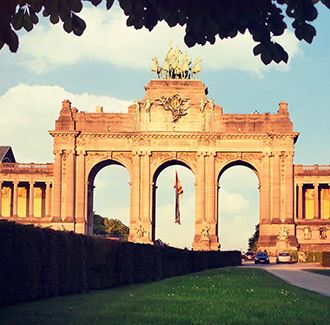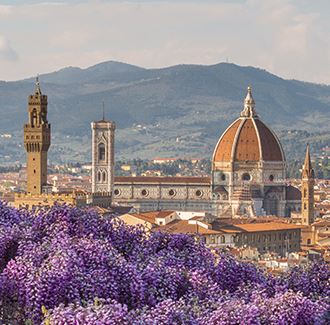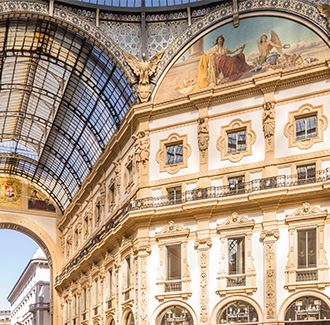
A trip to the world of Chocolate
July 7 is World Chocolate Day - an excellent excuse to discover some destinations related to this gift from the gods. Give your diet a break and travel with us to Cancún, Barcelona, Milan or Brussels.
Cocoa arrived in Europe in the early years of the 16th century, brought by the Spanish conquistadors. But it did not become truly popular until the next century. This growing demand led to the establishment of plantations in the West Indies - now known as the Caribbean - and in Spain's American colonies.
In pre-Columbian civilizations, cocoa was consumed as a drink, to which vanilla and chili were added - spices that are native to the same region as wild cocoa trees. The market value of cocoa was so high that its seeds were also used as currency. In 1828, Dutch chemist Johannes van Houten invented a press that was capable of separating butter from cocoa solids, thus obtaining lean cocoa powder. This resulted in the invention of new products, including the chocolate bar. In a nutshell, this is the history of chocolate.
If you want to find out a lot more, the best solution is to travel to the place where it was born: Mexico.
Cancun: Welcome to the cradle of Chocolate
Theories differ, but the most widely accepted conjecture claims that the magic of cocoa beans was discovered by the Mayans.
Whether this is a myth or a fact, we know that cocoa was highly treasured by the inhabitants of Yucatan. Cancun is one of the destinations where you can discover (and experience!) the history of chocolate. And we are not just talking about devilishly tempting chocolate shops. It is well worth booking one of the many available tours and travel to the world of the Mayans. Savoring the so-called 'drink of the gods' is one of the rituals not to be missed. Then let yourself be seduced by the Temazcal ceremony, set in a volcanic-origin natural sauna.
It is only natural that chocolate becomes one of the highlights of your trip, but Cancun has much more to offer. Between a bonbon and a truffle, take the opportunity to dive into the turquoise sea or set out to discover the fantastic pre-Columbian pyramids.

Belgium and Chocolate: an ancient affair
Belgian history and the history of chocolate are sometimes difficult to tell apart, a fact that may not be so surprising if we keep in mind that the country was once a Spanish colony.
Choco Story will explain you everything. Located in Brussels, just a few meters away from the famous Grand-Place, this chocolate museum explores more than 5,000 years of cocoa history in a fun and entertining way. In addition to the exhibition, Choco Story offers activities such as workshops, demonstrations by master chocolatiers, and, of course, a happy ending with a chocolate tasting.
Not far from the museum you will find several renowned shops where you will lose yourself among countless types of delicious chocolate. La Belgique Gourmande and La Bruyerre are two of these true chocolate temples, which also to happen offer good value for money.
Barcelona: the spanish capital of Chocolate
Barcelona's economy has been directly linked to chocolate since the so-called Age of Discoveries. It was from Barcelona that cocoa was sent to the rest of Europe, and it was also in this city that the first workshop for transforming drinkable chocolate into a solid product was created, back in the late 19th century. These and other trivia are featured in the Museo de la Xocolata (Chocolate Museum).
Sant Agustí Monastery, where the museum is located, also boasts a close relationship with chocolate, because in the 18th century the Bourbon army was a major cocoa consumer. Chocolate was included in the menus of all military academies - even for breakfast - and it was also part of regular battlefield supplies. Once you reach the museum, don't even think about leaving without enjoying a chocolate tasting with cava or wine. An experience that is as fun as it is enriching.
Another must-go for chocolate enthusiasts is Casa Ametller, right next to Casa Batlló. This modernist building, which bears the name of the chocolatier family that owned it in the early 20th century, offers an unforgettable tour and even a shop where you will find many irresistible gifts for your family and friends. But who knows if they will reach their recipients?

Chocolate-flavored Italy
Cocoa arrived in Italy - more precisely in the region of Tuscany - thanks to one Francesco Carletti, a 17th-century merchant who used to sell it as "the seeds of the Americas". As for chocolate production, it started in 1606 in Florence, Venice and Turin. If you want to know everything about chocolate, head over to the National Central Library in Florence, where there are many historical records about its consumption. But nothing compares to savoring local chocolate. First of all, schedule a visit to Rivoire. Sitting in Piazza della Signoria, this literary café is one of Florence's icons and offers an irresistible hot chocolate.
If you are in Venice, enjoy a gondola ride and marvel at the beauty of St. Mark's Square. And don't forget to stop by a chocolate shop (or more!) for some inebriating tastings.
If your destination is Milan, there is an ice cream parlor you don't want to miss out on. It's called Cioccolati Italiani and it sits very close to the Duomo and Galeria Vittorio Emanuele, two of the city's most famous icons. As the name implies, chocolate is the big star here - and it comes from several places around the world. Behind the desk there is a triple chocolate fountain; resist it if you can.

Switzerland, where milk chocolate is king
What comes to your mind when you think of Switzerland? Watches, pocket knives and… of course, chocolate!
Thanks to its border with Italy, which facilitated the movement of commodities, the region of Ticino became a chocolate production pioneer in the 17th century. In 1875 Daniel Peter created the world's first powdered milk chocolate - and the rest, as they say, is delicious history.
Ever heard of 'the breaking of the cauldron'? This is a tradition in the city of Geneva which celebrates an episode that took place during the French invasion in the early 17th century. As the story goes, a female innkeeper hurled cauldrons of boiling vegetable soup at the invaders who were climbing the city walls on the night of December 11, 1602, killing some of the soldiers. Peace would be signed in 1603. This heroic act was dubbed "L'Escalade" ("The Climbing") and gave rise to the December 12 public holiday. Today's tours of Geneva include a ceremony that recreates these events, collectively known as "the breaking of the cauldron". Needless to say, this cauldron is made of chocolate and filled with vegetable-shaped marzipans. The city's flag is also there.
This may be a little surprising, but chocolate reached Switzerland at a relatively late date. It all started in 1679, when the mayor of Zurich tried a cup of hot chocolate in Brussels and decided to export the recipe to his country. Now the city is a true paradise for chocolate lovers, with shops for literally all tastes. One of the city's most famous shops is Teuscher, an artisanal shop which is over 80 years old and remains faithful to its founder's original recipes. Located in the heart of Zurich's old town area, Teuscher offers more than a hundred types of bonbons, including champagne truffles filled with Dom Perignon and covered in dark chocolate.
From Mexico's pyramids to the streets of Switzerland, chocolate is more than enough reason to book a getaway or a holiday this summer.
Book with TAP and savor pralines, truffles, tablets… After all, diet can wait. But chocolate cannot!






